Author: Anja-Silvia Goeing
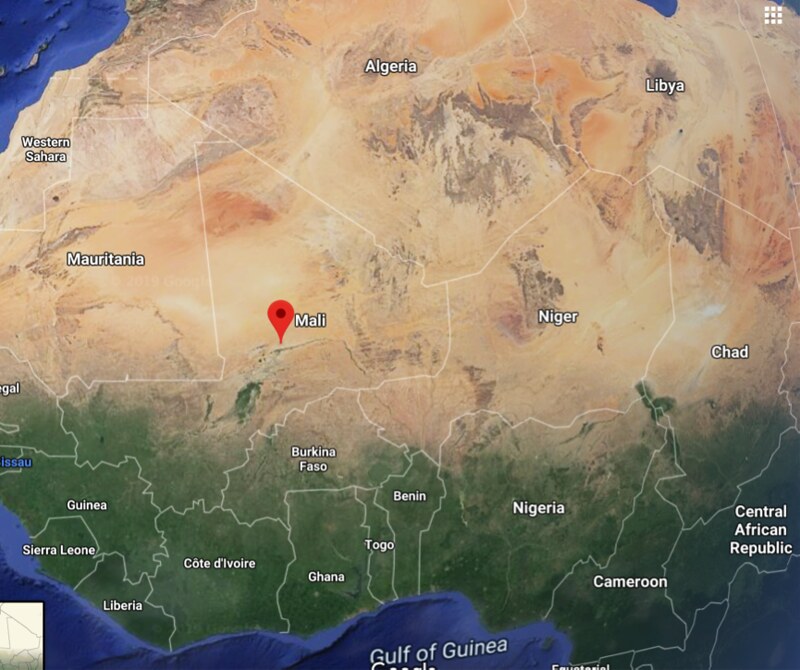
Figure 1: Timbuktu (the red flag) in Mali, Africa: google maps, April 5, 2019.
Introduction
Timbuktu is today the administrative headquarters of the sixth region (of eight) of the Republic Mali in West Africa. In Mali's North, Timbuktu is on the south end of the desert Tanezrouft, one of the most desolate parts of the Sahara. Mali is a landlocked country with today roughly 18.5 million inhabitants. Its capital is Bamako, a city roughly 1000 miles in the south-west of Timbuktu. In 2009, Timbuktu as a city had a population of 54,453, about the same as it had in the 16th century, a time of great prosperity. Timbuktu is today the site of medieval mosques, shrines, a university (madrasa), and UNESCO made it a cultural heritage site in 1988. In addition, Timbuktu was until 2012 the storing place of many thousand invaluable manuscripts.
Recent political wars damaged Timbuktu. While the population in Mali steadily increased around 3% per year, the population level in Timbuktu shrunk from the above mentioned 54,453 inhabitants in 2009 to 32,460 inhabitants by 2018. The causes of this diminution are mostly to do with terror attacks in 2012 and 2013 by Islamist groups that declared the region around Timbuktu an independent state, which led to people fleeing the region. The political situation stabilized again, when on April 1, 2013, French warplanes helped Malian ground forces chase the remaining rebels out of the city center. But the Islamists had destroyed 14 centuries-old shrines of local Sufi saints of the 16 that UNESCO had put under their protection, and they had set fire to the Ahmad-Baba-Library, the then home of thousands of invaluable Islamic manuscripts from medieval times and later. According to the Hamburg Centre for the Study of Manuscript culture, about 95% of the manuscripts from Ahmad-Baba-Library and many private libraries in Timbuktu were rehoused in the State Capital Bamako, and the Hamburg Centre gives their count in 2015 as 285.000 individual items.
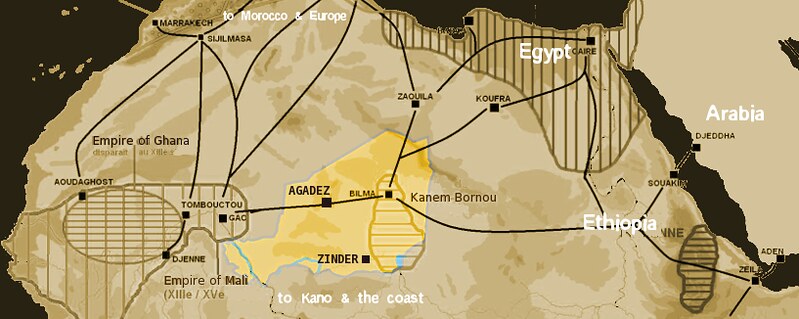
Figure 2: Niger-Saharan Medieval Trade Routes around 1400: Timbuktu is Located on the crossroads between North, South, East and West. https://commons.wikimedia.org/wiki/File:Niger_saharan_medieval_trade_rou... (accessed April 5, 2019)
Timbuktu's rich history of learning had to do with its situation as a commercial hub from the 12th century. It was at the cross-roads of trans-Saharan trade routes and became famous for its supply of gold. The city attracted Muslim scholars and scribes from different Islamic beliefs and different geographical regions. Many of them brought manuscripts with them and copied other manuscripts while in Timbuktu. The city's time of greatest affluence and learning was in the 15th and 16th centuries. Many legends about Timbuktu were brought to Europe, and the 19th century saw the French colonization of the region in 1893. In 1960, the independent Republic of Mali was established. Today, Mali is one of the poorest countries in the world, it ranks no. 182 in 2017 on the Human Development Index. In addition, Timbuktu, bordering the desert, suffers from the danger of desertification.

Figure 3: Location of the three mosques in the city centre: Plan of Timbuktu, made by the Africa explorer Dr. Heinrich Barth in 1855, https://commons.wikimedia.org/wiki/File:Plan_von_Timbuktu_1855.jpg. Source: Mittheilungen aus Justus Perthes’ Geographischer Anstalt über Wichtige Neue Erforschungen auf dem Gesammtgebiete der Geographie von Dr. A. Petermann. Teil 1, 1855
Three mosques, of which the two oldest original buildings go back to the early 14th century, the Djingareyber Mosque and the Sankore Mosque that included a university, and the Sidi Yahia Mosque (from 1400), together with sixteen mausoleums and holy public places make up the most important heritage spaces in Timbuktu. The mosques were rebuilt and restored in the late 16th century, between 1570 and 1583 (Djingareyber), 1577-1578 (Sidi Yahia), and 1578-1582 (Sankore). I am interested in linking the manuscripts back to the centre of learning at the Sankore madrasa, or university, and I would like to point to the intangible world heritage behind the tangible buildings and manuscripts: What were these manuscript cultures exactly? And how can they be preserved?
Values of Timbuktu's Cultural Heritage
The urban space containing the three mosques and 16 mausoleums has outstanding value as a testimony of historical, architectural, and urban development in a region of the Subsahara that does not present many relics of the past. Additionally to the UNESCO valuation that is solely geared towards the buildings, the 285.000 manuscripts (still today mostly in private possession) have not only tangible, but also intangible value as part of a long tradition of Islamic scholarship and learning, and of manuscript and scribal culture from 1200 to today.
For a historian, the fact that the mosques and other holy places of Timbuktu have been recorded from the late sixteenth century in the Arabic chronicles, or "tarikhs" of Timbuktu, make the buildings as speaking relics of this past even more valuable. The Arabic chronicles record Timbuktu as a centre of West African Sudan market and scribal culture. Because Timbuktu was at the crossroads of trade routes, the mosques and holy places of Timbuktu were imperative for the development and spread of Islam in Africa in late medieval and early modern times.

Figure 4: Sankore Mosque, Timbuktu. Photo Francesco Bandarin, date 01/02/2005; https://whc.unesco.org/en/list/119/gallery/&index=1&maxrows=12 (accessed April 5, 2019)
The buildings are architectural highlights from an era of great prosperity and intellectual importance. The three mosques present a specific style of architecture, working with earthen materials. Buildings as old as the mosques from these materials are very rare, but in this case they also represent a high point of Islamic learning and cultural and trade exchange of this region. How they were restored in the 16th century, which materials were used, how the spaces within and outside the mosques were configured, can tell us about West African Sudan architectural development, of which Timbuktu was the capital of culture in the 15th and 16th century.
As Elias Saad (Saad, p. 108) points out, the topography and thus, the urban space of Timbuktu has always been dominated by its mosques: "Their architecture rose above everything else in the city and they became the main points of referral and congregation in their respective quarters." They served not only as centres for prayers, but also as charities and hospitals for the poor. Saad assumes that the mosques determined the directions in delineation of quarters. With their central situation and integrating tasks, the mosques were the main forums of interaction between the various ethnical and social groups of the city, and their mixing with marketeers, travellers, migrating scholars.
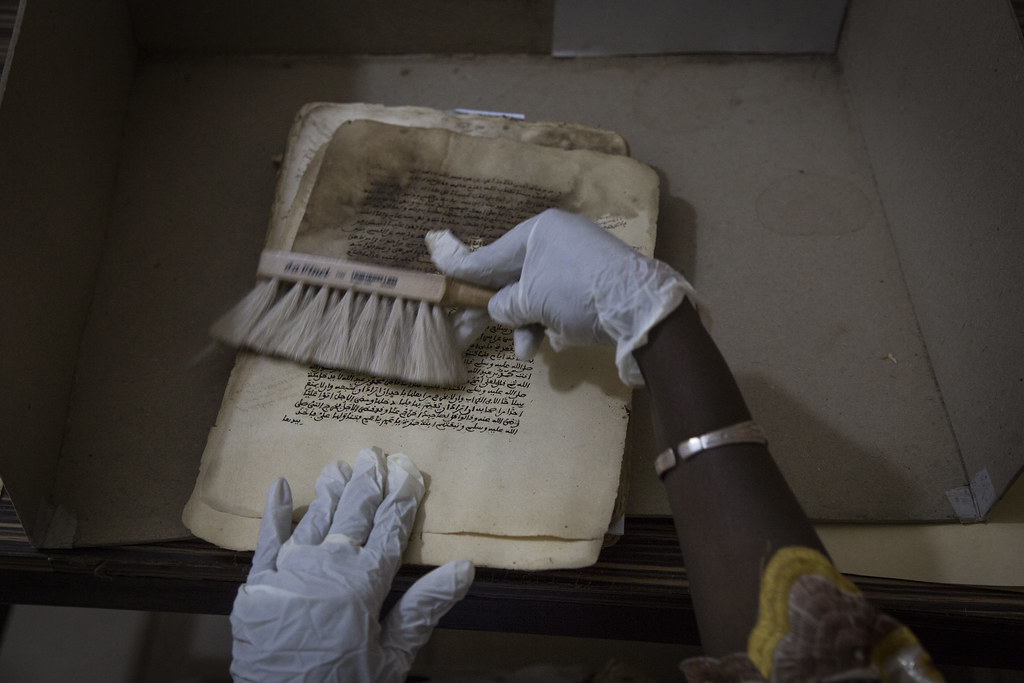
Figure 5: United Nations Photo: MINUSMA Support in the Preservation of Ancient Manuscripts in Mali, photo taken January 5, 2016: https://www.flickr.com/photos/un_photo/30874616233/in/photolist-qKptM-DC...
The city of Timbuktu has developed since the 16th century, and is now situated in one of the poorest regions of the world, as I have explained above. To keep a tradition alive that speaks about its prosperous past, it is necessary to retain the value of the place and the unique features of its history. And the tradition has been kept alive, outside the valuable efforts of UNESCO. The old families of Timbuktu keep as one of their most treasured possessions folders with manuscripts that their ancestors copied from lectures and textbooks from the Sankore University (madrasa) and the culture of learning that surrounded it. Some of these manuscripts are very old and date from the 14th century. An initiative of Timbuktu citizens together with money from South Africa, the Mellon foundation and other foundations worked to make these treasure visible to the public and at the same time to put them into storage places more adapted to their fragility. UNESCO officially complained about the site of the Ahmad-Baba-Museum next to the Sankore mosque over many years. And the complaints only ceased with the Islamist burning of the Museum in 2012. Although the manuscripts were rescued through night-drives of single people to Bamako, the capital of Mali, the collections did not yet get the recognition as tangible and intangible heritage from UNESCO that they should have had. Today, the manuscripts are curated by a team from Hamburg University in Germany with the help of the German Federal Foreign Office Ministry, the German Jutta Vogel Foundation and the German Gerda Henckel Foundation.
The key question and task here is to put the two threads together again, the manuscript culture and the building culture in order to show more about the scholars and their habits of learning, writing and talking in the spaces of the city, and more about their interactions with the other social groups mixing in the markets and in the mosques. I want to know how it is that all the old families of Timbuktu were able to take part in this writing cultures, and how it is that manuscripts came to and were distributed from Timbuktu in olden times. The texts, as well as the buildings, together with the history of the houses as storing places, might give answers to these questions, as might the stories that families were passing on to their children about the manuscripts and how they came to possess and cherish them.
Timbuktu's Cultural Heritage conserved, utilized, and managed
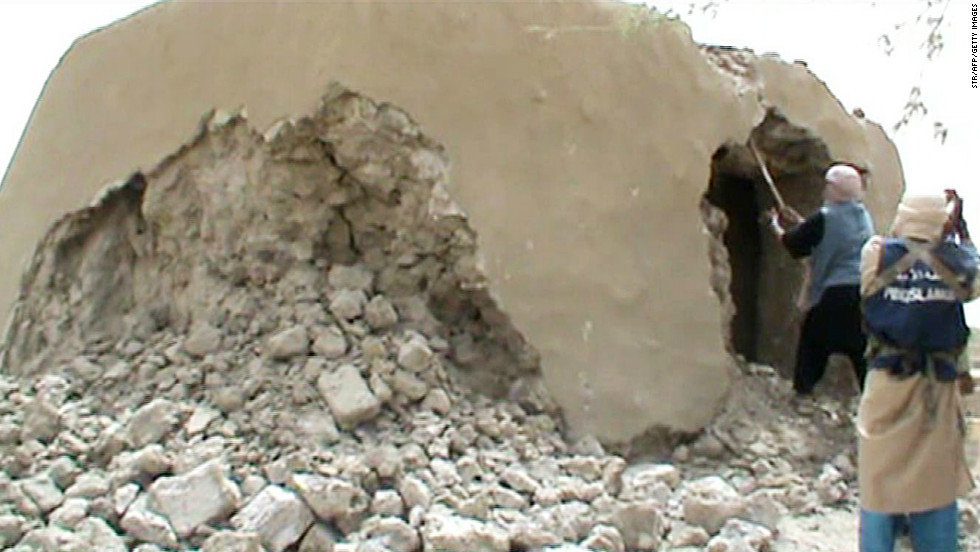
Figure 6: Islamists set fire to sacred tombs in Timbuktu: Islamist militants destroy an ancient shrine in Timbuktu on July 1, 2012 in a still from a video.
https://www.cnn.com/2012/06/30/world/africa/mali-shrine-attack/index.html (accessed: April 5, 2019)
There have been two stages of conservation: The first stage started in 1988 when UNESCO accepted the three mosques and 16 mausoleums of Timbuktu as Cultural Heritage. It ended, in 2012 when an Islamic war over Timbuktu broke out, with 20.000 people leaving the city. Much cultural heritage was destroyed, but about 95% of the old manuscript were brought to safety in temporal spaces in Bamako, the capital of Mali. The second phase of conservation started immediately after the war. However, although the war was won by Malian forces with the help of French military in March 2013, the city continues to be a place of military presence, and most of the manuscripts have not been returned to their old home. The center space with the three mosques is intact, with fourteen of the sixteen mausoleums destroyed and re-built again after 2014, but tourism is almost non-existent because of war threat that is still imminent in the region.
Publicly available but tucked away on the UNESCO World Heritage Site, The UNESCO documents are my chief source for summarizing the efforts of conservation, utilization and management of the building site before and after the war. The manuscripts, however, have their own narrative which is not so widely documented, because they had not been part of the UNESCO World Heritage Site. But the website of the manuscripts' remote curatorial place at the University of Hamburg gives some indications about what has been done with them and how they are managed.
1. Before the war
Conservation, utilisation and management of the World Heritage Site before the war was directed first and foremost to securing the site from danger created by the climate. Between 1990 until 2005, UNESCO had put the Timbuktu site on their list of World Heritage in danger: the report of 1996 states that "the Mosques of Timbuktu are made of fragile materials which are regularly threatened by rare but violent bad weather and have only survived several centuries due to the annual maintenance carried out by the local population, under the direction of the Imam and the responsibility of the corporation of masons, and with funding from the wealthy personalities of the town for the more costly works."
A workshop in 1996 was able to connect the international UNESCO conservation teams with the local groups and their Imam. The workshop aimed to teach the UNESCO officials the old techniques of conservation and was the basis of a future conservation plan for the site. (https://whc.UNESCO.org/en/soc/2113). In 2003, the UNESCO report on Timbuktu was very positive, declaring that the dangers such as sand encroachment, lack of financial resources, deterioration of the rainwater drainage system and the need for appropriate law had all been resolved. (https://whc.UNESCO.org/en/soc/2680) In 2005, the heritage site was taken off the UNESCO List of World Heritage in Danger, after a Governmental conservation heritage plan had been accepted. (https://whc.UNESCO.org/en/soc/1243)
UNESCO officials complained in later reports up to 2012 that the state allowed the Ahmad-Baba-Museum, a new building of the Ahmad Baba Institute of Higher Learning and Islamic Research, created in 1974, to be build in the direct vicinity of the Sankore mosque, thus changing its surroundings from their original structure. It is here that a general city heritage management plan would have been of advantage to connect stakeholders with interest in the building site with those with interest in the manuscripts and scholarship (displayed by the Ahmad-Baba-Museum); such a plan however did not exist. (https://whc.UNESCO.org/en/soc/1161) The interests of UNESCO were overridden by the interests of the Presidents of Mali and South Africa in order to build the Ahmad-Baba-Museum directly on the old university site at the Sankore mosque to house and display the old manuscripts, and to welcome researchers worldwide. (This is the first time that the reports mention attention to tourism and utilization of the site, however with a critical undertone!)
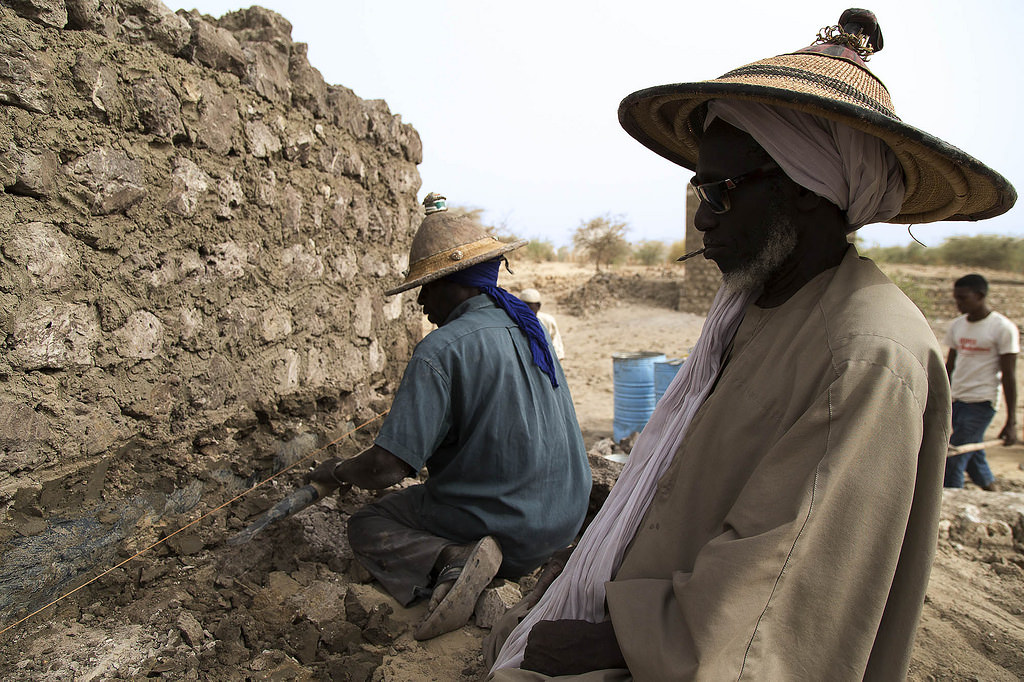
Figure 7: Rehabilitation of the mausoleums in Timbuktu destroyed by jihadists during the occupation of the northern regions of Mali. Program Implemented by UNESCO and its partners as the Minister of Culture of Mali and MINUSMA. Timbuktu, April 15, 2015. Photo: MINUSMA/Harandane. https://www.flickr.com/photos/minusma/17389128385 (accessed: April 5, 2019)
2. After the war
All strategies that had been used before the attack by UNESCO and other sponsors such as the Mellon foundation were geared towards making the heritage publicly accessible. In and after the war, from 2012, the strategies were much more about keeping the manuscript storing places a secret, and not putting too much public attention on the armed conflicts. UNESCO inscribed the Timbuktu Heritage Site yet again in their List of World Heritage in Danger, this time referring to the danger of destruction through occupation of the site by armed groups, absence of management, and the destructions of the mausoleums that had already happened. (https://whc.UNESCO.org/en/soc/1865). Timbuktu suffered another armed conflict, with the destruction of 15 of the 16 mausoleums , as reported on 18 February 2015 by the State Party.
This time national and international sponsors pulled together to work on restoration and reconstruction strategies (https://whc.UNESCO.org/en/soc/3218). And the extent of the damage created now for the first time a collaboration offered by UNESCO with the private manuscript owners to rehabilitate four private ancient manuscripts libraries (that were in existence before the war). In 2016, fourteen of the 16 mausoleums were rebuilt, and several of the private libraries restored.
The most recent report of 2018 was very positive: most of the war damage could be restored, and the local, state and UNESCO officials were finally able to put a 2018-2022 Management and Conservation Plan in action, a meta-plan for the whole of Timbuktu and its heritage. We note that in the face of war, they have learned to work together. The Ahmed Baba Heritage Institute and its many manuscripts is included in this new collaboration. While the secondary literature consulted does not give hope for the manuscripts ever returning to Timbuktu, the UNESCO report of 2018 opens up this new window and we will definitely stay tuned to know what of the management and conservation plan will have been realised over the next couple of years, seeing the continuing unstable security situation and the notable impacts due to military presence in Timbuktu.
Bibliography
Centre for the Study of Manuscript Culture, University of Hamburg: https://www.manuscript-cultures.uni-hamburg.de/timbuktu/timbuktu_e.html (March 28, 2019)
English, Charlie: The Storied City: The Quest for Timbuktu and the Fantastic Mission to save its Past. New York: Riverhead Books, 2017
Human Development Index: http://hdr.undp.org/en/data (March 28, 2019)
Hunwick, J.O., “Timbuktu”, in: Encyclopaedia of Islam, Second Edition, Edited by: P. Bearman, Th. Bianquis, C.E. Bosworth, E. van Donzel, W.P. Heinrichs. Consulted online on 24 March 2019 <http://dx.doi.org.ezp-prod1.hul.harvard.edu/10.1163/1573-3912_islam_COM_... First published online: 2012; First print edition: ISBN: 9789004161214, 1960-2007.
Saad, Elias N.: Social history of Timbuktu: the role of Muslim scholars and notables 1400-1900. Cambridge: Cambridge University Press, 1983
Unesco World Heritage: Timbuktu. https://whc.unesco.org/en/list/119 (March 27, 2019)
UNESCO World Heritage Centre-State of Conservation: Timbuktu (Mali) 1990: https://whc.UNESCO.org/en/soc/1619 (accessed: April 5, 2019)
UNESCO World Heritage Centre-State of Conservation: Timbuktu (Mali) 1994: https://whc.UNESCO.org/en/soc/1800 (accessed: April 5, 2019)
UNESCO World Heritage Centre-State of Conservation: Timbuktu (Mali) 1995: https://whc.UNESCO.org/en/soc/2019 (accessed: April 5, 2019)
UNESCO World Heritage Centre-State of Conservation: Timbuktu (Mali) 1997: https://whc.UNESCO.org/en/soc/2113 (accessed: April 5, 2019)
UNESCO World Heritage Centre-State of Conservation: Timbuktu (Mali) 2003: https://whc.UNESCO.org/en/soc/2680 (accessed: April 5, 2019)
UNESCO World Heritage Centre-State of Conservation: Timbuktu (Mali) 2004: https://whc.UNESCO.org/en/soc/1376 (accessed: April 5, 2019)
UNESCO World Heritage Centre-State of Conservation: Timbuktu (Mali) 2005: https://whc.UNESCO.org/en/soc/1243 (accessed: April 5, 2019)
UNESCO World Heritage Centre-State of Conservation: Timbuktu (Mali) 2006: https://whc.UNESCO.org/en/soc/1161 (accessed: April 5, 2019)
UNESCO World Heritage Centre-State of Conservation: Timbuktu (Mali) 2007: https://whc.UNESCO.org/en/soc/1004 (accessed: April 5, 2019)
UNESCO World Heritage Centre-State of Conservation: Timbuktu (Mali) 2008: https://whc.UNESCO.org/en/soc/928 (accessed: April 5, 2019)
UNESCO World Heritage Centre-State of Conservation: Timbuktu (Mali) 2009: https://whc.UNESCO.org/en/soc/747 (accessed: April 5, 2019)
UNESCO World Heritage Centre-State of Conservation: Timbuktu (Mali) 2010: https://whc.UNESCO.org/en/soc/502 (accessed: April 5, 2019)
UNESCO World Heritage Centre-State of Conservation: Timbuktu (Mali) 2011: https://whc.UNESCO.org/en/soc/382 (accessed: April 5, 2019)
UNESCO World Heritage Centre-State of Conservation: Timbuktu (Mali) 2012: https://whc.UNESCO.org/en/soc/261 (accessed: April 5, 2019)
UNESCO World Heritage Centre-State of Conservation: Timbuktu (Mali) 2013: https://whc.UNESCO.org/en/soc/1865 (accessed: April 5, 2019)
UNESCO World Heritage Centre-State of Conservation: Timbuktu (Mali) 2014: https://whc.UNESCO.org/en/soc/2928 (accessed: April 5, 2019)
UNESCO World Heritage Centre-State of Conservation: Timbuktu (Mali) 2015: https://whc.UNESCO.org/en/soc/3218 (accessed: April 5, 2019)
UNESCO World Heritage Centre-State of Conservation: Timbuktu (Mali) 2016: https://whc.UNESCO.org/en/soc/3335 (accessed: April 5, 2019)
UNESCO World Heritage Centre-State of Conservation: Timbuktu (Mali) 2017: https://whc.UNESCO.org/en/soc/2113 (accessed: April 5, 2019)
UNESCO World Heritage Centre-State of Conservation: Timbuktu (Mali) 2018: https://whc.UNESCO.org/en/soc/3779 (accessed: April 5, 2019)
